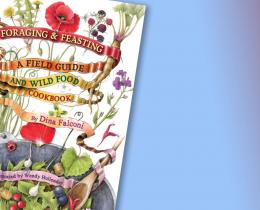Omega: Why would someone want to start making their own self-care products?
Dina: First of all, it’s really fun. You don’t have to want to do it for any reason other than it’s really fun. Then, there are the deeper issues, which have to deal with self-care in a real way. It’s questioning what our body needs and then looking for simple solutions. This also opens up a world for people who have chemical sensitivity issues. They can custom blend what their body needs and not get headaches or reactivity.
If you’re into ecosystem health, there’s a huge amount of toxins that are put into these commercial products that we slather all over ourselves a lot of the time. So, creating your own self-care products is a way of physically not putting toxins on your body, and also reducing, hopefully, what’s coming into the world. It’s a comment on the industrial way of living. It’s a pause to reconsider what is really needed.
Omega: How does someone get started making their own products?
Dina: I wrote a book on this subject, Earthly Bodies & Heavenly Hair. It’s contains 450 recipes for how to make all your personal care products. It’s for someone who just wants to look in their cupboard and see what they have, as well as someone who wants to go out and forage. It goes from the basics to more complicated recipes.
Omega: You grew up in the East Village of New York City. How did you get interested in wildcrafting?
Dina: I lived in New York City in the late 1960s through the early 1980s. It was a much more sparsely populated neighborhood then. There were a lot of abandoned buildings. The neighborhood was full of adventuresome, creative, edgy, and experimental people. It was that way with food, too. You’d see all sorts of vegan, macrobiotic restaurants. It was a place where you could try things out. There was a celebration of food in a very old world way that imprinted on me.
A man by the name of Micky Carter became my mentor. He convinced me, at the age of 11, that food is your medicine. That’s how it came to be that I started to rethink food, which meant I had to rethink healthcare, what I put on my skin, where my food came from, and who was controlling the food.
I was a very strange kid, I guess.
Omega: How do you recommend people start foraging in urban environments, given concerns about pollution?
Dina: The first step is just being an observer in the ecosystem. That’s a great thing to do in New York City. It’s very poetic and beautiful. It brightens the day.
You don’t have to pick the plant at first. You learn the language of plant identification. You may not even know its name for a year or two. Eventually the ecosystem starts to speak to you—you start to learn what's there and how it's used. It's a constant relearning.
Then there’s working beside someone who forages. Do some plant walks with them. My book Foraging & Feasting is designed for someone looking in their backyard, or wherever they live, to find food there. Matching the plant maps, people can visually begin to identify what they are seeing. Then they can learn the ethnobotany. Can you eat it? Is it medicine? How has it been used historically? What does it smell like, taste like?
Omega: How do you make sure your foraging is done in a sustainable manner?
Dina: I encourage the harvesting of the most weedy plants first. Then, people can learn to harvest. If you want plants to keep growing and do well, you don’t pull them up by the root. You can harvest, like you would basil, by pinching at the node. This stimulates the plant to produce more. It’s a beautiful idea that the human interaction can create more abundance.
If you’ll be harvesting a root, say a dandelion root, you harvest the root in such a way that the plants around get more space, they’re happier. If you’re harvesting roots, you are killing the plants so make sure you have plenty left of that particular plant population.
Omega: Do you think everyone should become a forager?
Dina: Everybody should be doing this. Instead of people creating lawns, if they would just let their weeds grow, huge amounts of food and medicine would be right there. Garlic mustard, which people are pretty angry about, provides us with greens. It’s the first green to show itself after the snow melts and provides vitamin C and beta carotene. It’s a gift that’s arriving as an invasive species. Most folks don’t love invasive species, but they are here, they have gifts to offer us, so how do we engage them?



